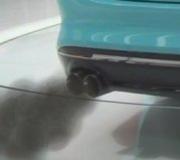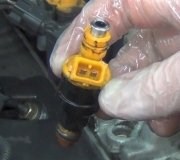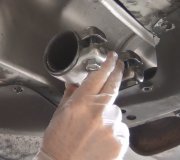Thanks. It's my son's car. We've checked both coolant and engine oil and changed both. He is topping off coolant about every fill-up. We haven't measured how much coolant it is losing, but it's a fair amount. Combustion products are definitely in the coolant just based on coolant color and condition.
The oil isn't milky white, so it doesn't appear much coolant is getting into the oil.
Ford's utterly ridiculous "fix" is to put a coolant level sensor in the coolant tank. A lot of good that does you when the head gasket fails. They refuse to fix the millions of failed engines with this problem that are out of warranty. There are a couple of class-action lawsuits against Ford on this.
The open-deck block design and the coolant groove between the cylinders are other stupid "innovations."
A couple of the ODB2 codes indicate head gasket failure. I wonder what engine instrumentation they use to identify head gasket failure. Do they look at overheating and infer the gasket failed?
Interestingly, there's no code for cat converter failure. I understand the additives in the coolant getting into the combustion chambers can cause fouling of the cat.
We would like to figure out a way to pass smog to keep it going a couple more years. We'd like to avoid the big expense of a new head gasket (which will fail like the first one did after a while).
I figure that we should drive the car to get the engine as hot as we can, then keep it idling at the smog station. Don't turn it off to let coolant puddle in #3 cylinder then puff white smoke on re-start. This might do the trick. I don't think the gas chemical analyzer will look for any coolant additives, just NOx, CO, and unburned hydrocarbons. So, if we can avoid a smoke during the throttle snap or engine restart, we might pass.
Friday, August 25th, 2023 AT 9:26 PM



